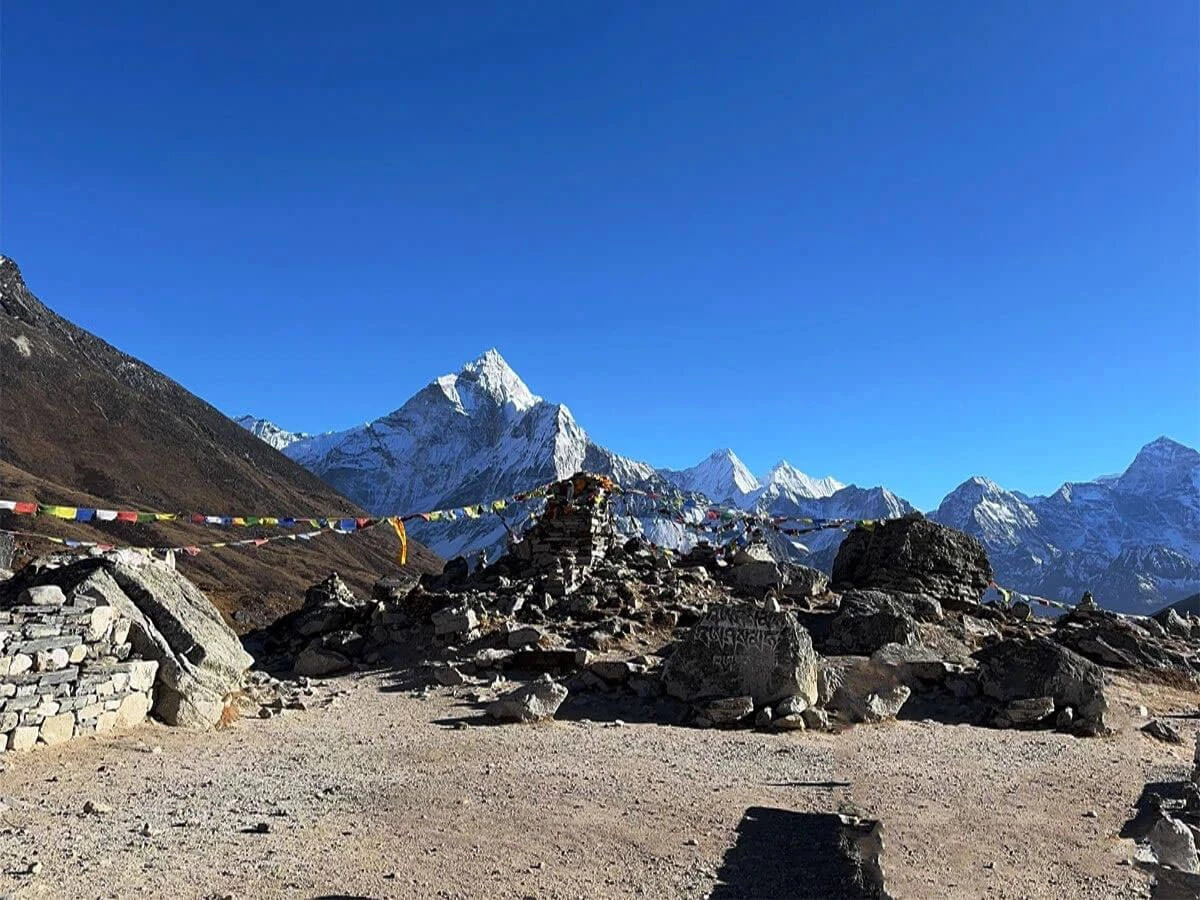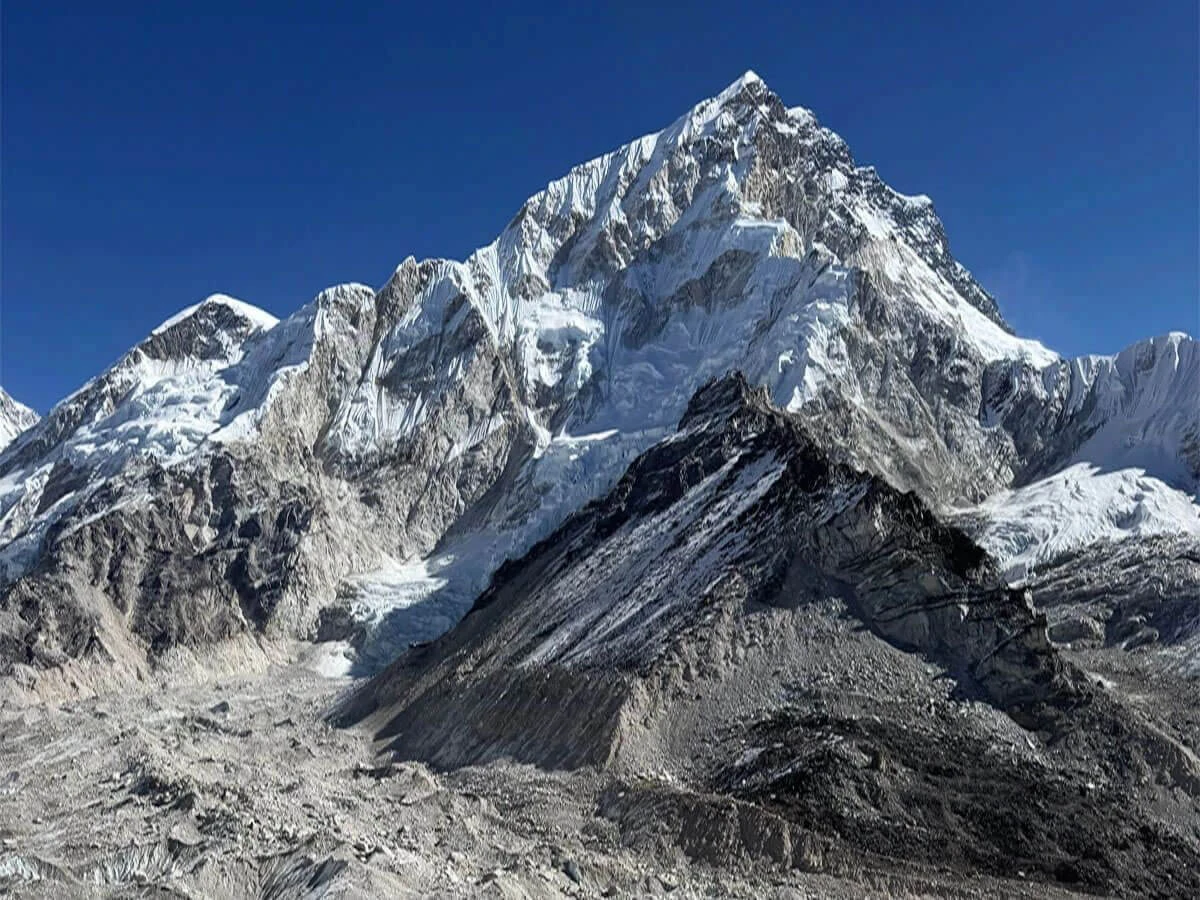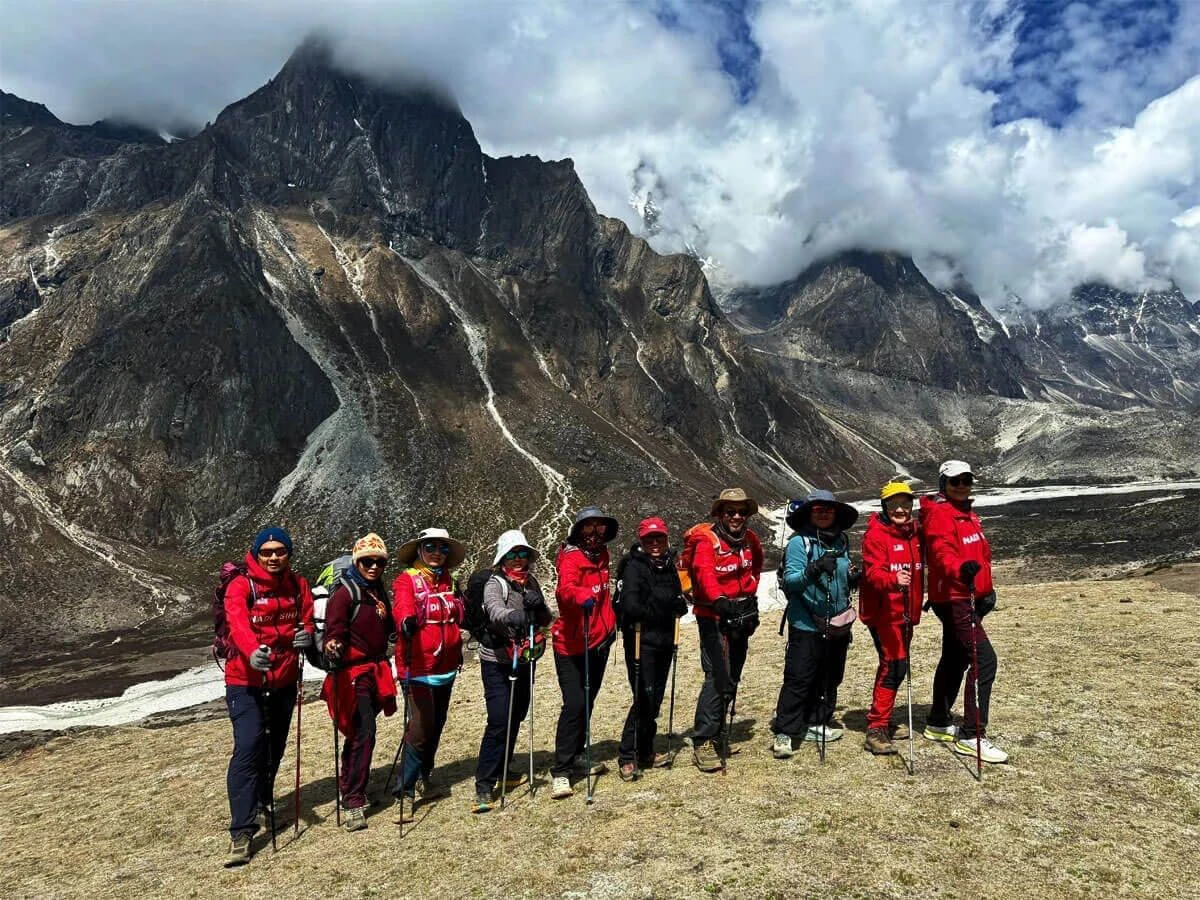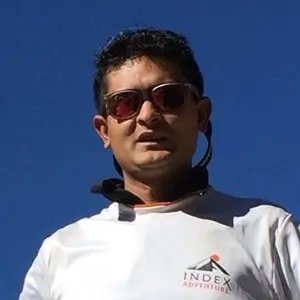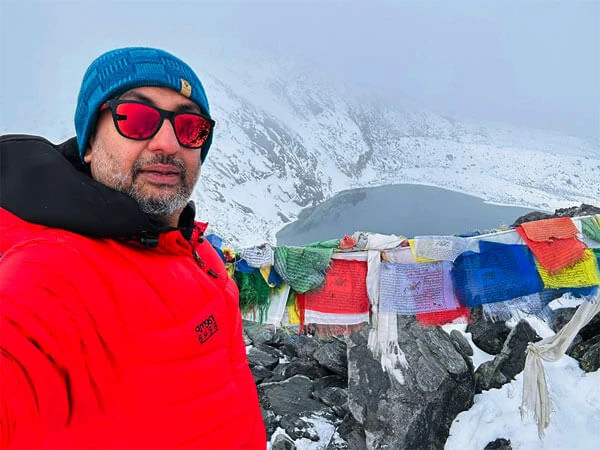Some great personality said, Thousands of tired, nerve-shaken, over-civilized people are beginning to find out, going to the mountains is going home, that wilderness is a necessity. Everest Base Camp Trek offers you the wilderness that you are seeking. The most thrilling and adventurous trail runs to explore the heavenly, touching apex of the highest mountain in the world.
Everest Base Camp Trek - 14 Days
Highlights of Everest Base Camp Trek
- As you take the EBC trek, also get the view of Mount Everest, the tallest mountain in the world, from all its scenic points
- Reach the famous Everest Base Camp, where climbers head on to conquer the behemoth, and where the rest of the world is in awe at the existence of the giant
- Begin your journey with the pulse-pumping experience of a flight to Lukla, one of the riskiest runoffs in the world, ideally located in the Himalayas
- Visit Namche Bazaar, a colourful Sherpa town considered the Gateway to Everest, with markets, cafes, and beautiful mountains in the backdrop
- Tour the Tengboche, which is said to be the home of the most popular monastery in the area, having spectacular views of Everest and Ama Dablam
- Everest View Hotel is another great hotel; it is among the world's highest as it’s at the foot of Everest and the surrounding mountains, giving it a great view
- Study and get immersed in the heritage of the legendary Sherpa people, their known strength and power, as the roots of their strong spiritualism
- Mesmeric panoramas daily with a glimpse of a few of the undoubtedly best mountain sceneries of the Himalayas at Lhotse, Nuptse, Ama Dablam, Thamserku, and of course the Everest as well
- Visit Sagarmatha National Park to see the variety of flora and fauna, along with rhododendron forests, Himalayan wildlife, and the rare bird species.
Everest Base Camp Trek 14 days
Embark on your way to the top of the world- Mt Everest! Our 14-day Everest Base Camp Trek package takes you there. You will find yourself in the most spectacular place ever imaginable. You will be standing between the almighty mountains that rise above eight thousand feet, and you will be celebrating their splendor. The awe-inspiring views of the beautiful mountains swaddled in the glittering white snow, the Everest Base Camp Hike takes you beyond your imagination.
The mind-blowing experience of viewing the tips of the mountain range stuck up like a row of thorns. And, swaddled around them are the necklaces of powdery snow. This adventurous journey takes you to the base of the classic south face of Mt Everest in Nepal. You will be blessed with an opportunity to explore the highlands of Nepal, the most stupendous and scenic beauty of the world that you have ever encountered. The hostile behavior of the Sherpas, their culture, lifestyle, and friendly behavior will leave you in wonder.
Coniferous and subtropical forests, wetlands, and montane grasslands are a refreshing part of this trek, as are the inhospitable, frozen mountain tops that tower above. Hiking through the Everest Base Camp Trekking trail, you will stop at a famous village, Namche Bazaar. It is a village surrounded by frosty pinnacles of the mountains and is also known as the Gateway to Everest. Another famous stop on the trail is Tengboche Monastery, a spiritual center of the Khumbu with plenty of convoluted artwork and holy writings. In this way, ascending through the steep highlands, walking through the montane grasslands, and passing through the beautiful rhododendron forest, we embark on our adventurous journey to the top of the world, i.e., Everest.
Kala Patthar - New Height with the Stately View of Mt Everest
Standing tall at a height of 5,644 metres in the Khumbu area of Nepal, Kala Patthar is among the easiest, but most soul-stirring, places to view Everest in its purest, untarnished glory. This rocky outcrop above Gorakshep is not a real summit, but it offers one of the most sweeping visuals everywhere, with Everest, Lhotse, Nuptse, and the Khumbu Glacier tumbling down all rendered with stark clarity before the thinning sky of immense elevations.
Although there is little technical skill required for the climb, getting to this height is nevertheless a difficult personal achievement.
What It’s Really Like at Everest Base Camp (South)
The Everest Base Camp is located at an altitude of 5364 meters (not to the peak, but to the primary destination of our journey) on top of the Khumbu glacier. Trekking to Gorakshep tends to start during the day, but because of the uneven and rocky glacier trail, it takes two to three hours. The ice moves the ground along with it, and every step weighs a ton at this elevation.
At the base camp, you cannot see the peak of Mount Everest. It is obstructed by Nuptse. However, the nearby scenery is compelling. The Khumbu Icefall is coming up, and mountains such as Pumori and Lingtren form the horizon. Your feet smack on the glacier. The sound of wind and somewhat remote ice movement is nothing.
The camp itself is a silent spot, scarred by a painted rock, and, during the climbing season, dotted over with striking-coloured exploration tents. The majority of the visitors get to sit down in silence, others scream and cry, and some even stay quiet and just sit there, spend time contemplating, taking pictures, etc, and depart with a little token of gratitude, then make the long, reflective journey back.
Everest Base Camp Trek Itinerary Overview
Once you spend some time in Kathmandu city and make preparations to go trekking in Everest Base Camp, you take a flight from Kathmandu to Lukla, which is the starting point of the Trek. Lukla will be reached after a spectacular flight over the beautiful scenery, parallel to the mystic mountains. You stroll up the gleaming Dudhkoshi river, and you are walking through a well-paved path to Phakding. You trek up into a forest of pine and cedar trees into the hustle and bustle of Namche Bazaar. You walk to the Everest View Hotel to appreciate breathtaking panoramas of Lhotse, Ama Dablam, Tawache, Thamserku, and other towering mountains of the Everest region of Nepal.
Trekking to the Everest Base Camp by itself is a chance to gain some ideas about the life of Sherpas and their culture. Exploring the Sherpa culture museum and interacting with local people along the route will make you understand them more, and a visit to the Tengboche monastery will make you understand more about Tibetan Buddhist culture.
As you go up from Tengboche to Dingboche to Lobuche, the mountain views are clearer and nearer. Finally, after a few days of strenuous ups and downs, you make your way to the top of Everest Base Camp (EBC), your ultimate dream. The soaring mountain ranges right in front of you are a reward for your efforts on the trek. The jaw-dropping 360 views of the peaks of Everest, Changtse, and Nuptse Nup II from the peak of Kala Patthar (5,545m), a black stone ridge, are simply astonishing.
Join this incredible Hike to Everest Base Camp with Index Adventure Pvt. Ltd.
Mount Everest Base Camp Trek in Nepal with the best one
Where the trekking to Mount Everest Base Camp is concerned, selecting the right trekking partner is significant to a successful journey that should be memorable and safe too. At Index Adventure, we consider the safety and well-being of our visitors as paramount. The expedition is guided by highly experienced Sherpa trekking guides who are not only specialized in the area but also well informed on the culture and terrain of the region, as well as the weather.
We will also lead you at a suitable pace, hence allowing easier troupe and reducing risks. Being a leading trekking company in Nepal, we are well known for taking extensive care, well-informed preparation, and a well-planned EBC itinerary together with high-quality equipment.
The service of our team is to ensure that you have a form of assurance, as you get off the plane at Lukla, to the point at which you fly back to Kathmandu, whether on foot or by air travel, your experience is going to be a memorable and secure one. Joining Index Adventure is, therefore, a guarantee that you are working with a reputable, trustworthy, and caring crew that will never compromise your health and happiness. We will ensure you have the best Everest Base Camp adventure in Nepal possible!
You Will See & Explore
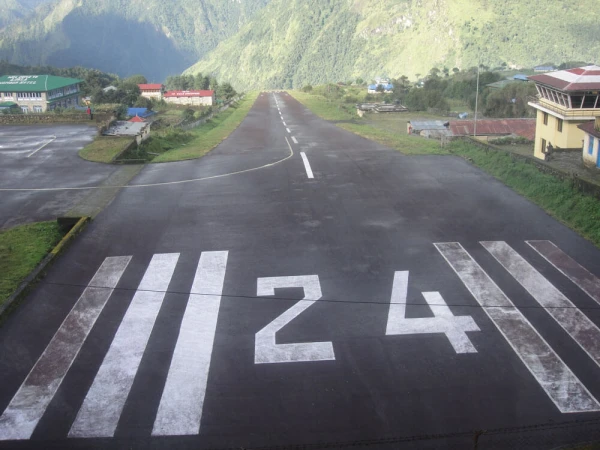
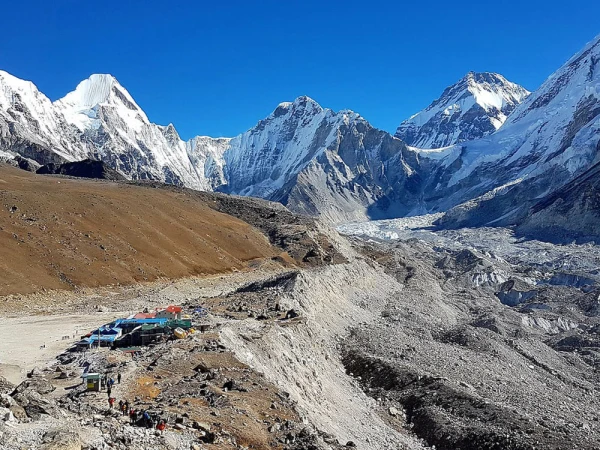
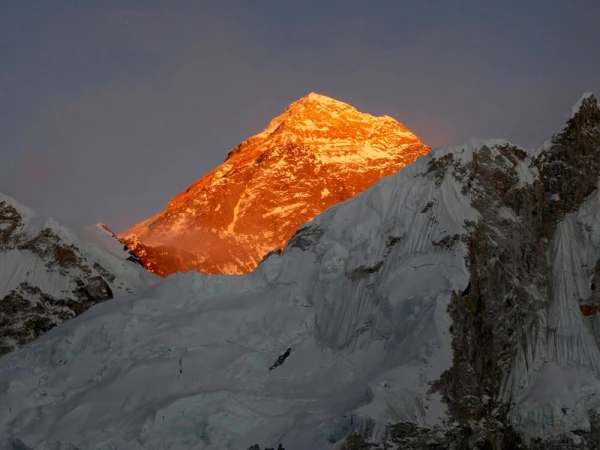

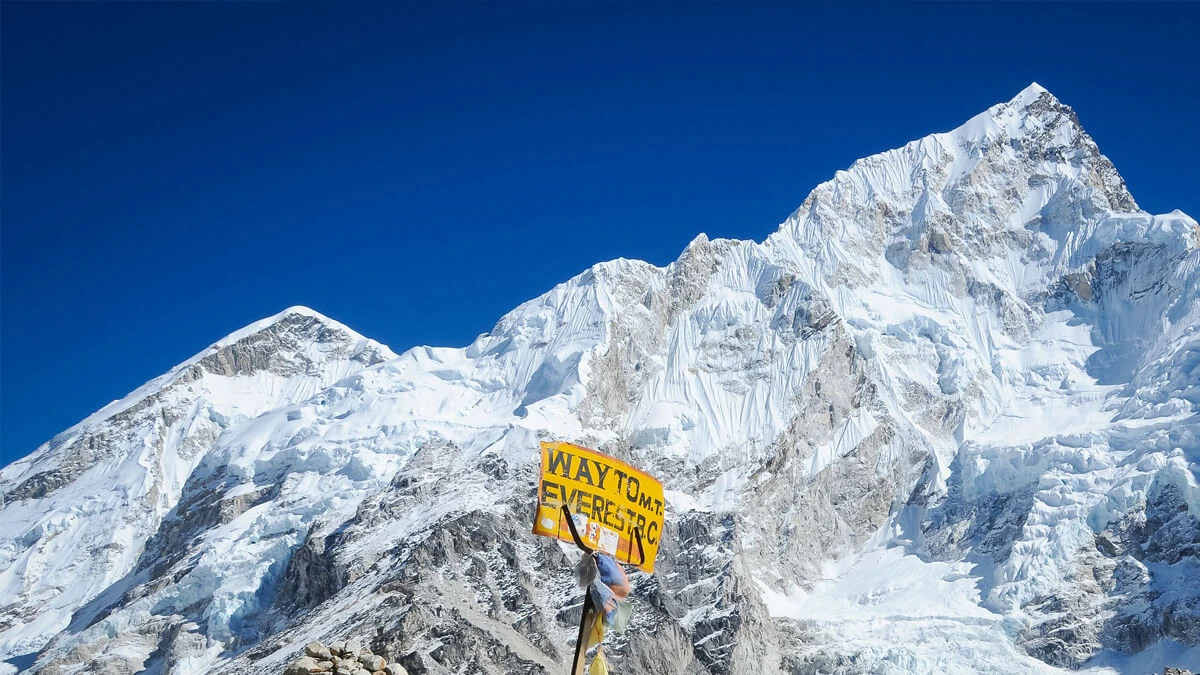
Everest Base Camp Trek - 14 Days Itinerary
EVEREST BASE CAMP TREK
Dominated by the world’s highest peaks, trek to the Everest Base Camp is bound to sweep your heart with tranquil yet challenging trekking trials, absolute landscapes, and mesmerizing views of iconic mountain ranges. The 14-day long trek to Everest Base Camp initiates with the fight to Lukla from Kathmandu. After your arrival in Lukla, you will be trekking towards Namche Bazaar via Phakding. We will further continue our trek towards Tengboche (3,870m) and Dingboche (4,360m). Tengboche swells the largest monastery in Khumbu region; Tengboche Monastery built in 1923. From Dingboche, we will pave our path towards Gorak Shep (5,170m) via Lobuche and finally reach to Everest Base Camp (5,364m). The major highlights of this trek are spectacular vistas of iconic mountain ranges including Mt. Everest, Mt. Ama Dablam, Mt. Lhotse, Mt. Cho Oyu, Mt. Makalu and many more, insight to Sherpa culture, exploration of medieval gompas and monasteries and tranquil trails.
Upon your arrival at Tribhuvan International Airport in Kathmandu, one representative from our team will greet you at the airport with a warm welcome. Then, you will be transferred to your hotel in the heart of the city, where you will check in and take some time to rest and recover from your journey. You may even explore the vibrant streets of Thamel, filled with cafes, shops, and cultural vibes.
After an early breakfast, you will be transferred to the domestic airport in Kathmandu, or during peak seasons, take a drive to Manthali Airport in Ramechhap. You board a 25-30 minute flight to Lukla, the main gateway to the Everest region, where you are treated to stunning views of the nearby Himalayas. Upon landing in Lukla, you begin your trek to Phakding, passing through forested valleys, Sherpa villages, crossing several suspension bridges, and walking alongside the Dudh Koshi River. Arriving at Phakding, a small village located in a quiet river valley, offers a perfect place to rest after the first day of the trek.
After breakfast at your teahouse in Phakding, you begin your trek along the Dudh Koshi River, crossing multiple suspension bridges and passing through charming villages and a steep uphill climb through pine forests towards Namche. Today’s trek can be challenging yet mesmerizing because of the increasing altitude, but with the first glimpse of Mount Everest, your journey gets even more captivating. Reaching Namche, the bustling Sherpa capital and main trading center of the Khumbu region, is surrounded by stunning Himalayan peaks.
Today is a rest day in Namche Bazaar to help your body adjust to the increasing altitude, reducing the risk of altitude sickness. On this day, you take a short hike to Hotel Everest View, treated with stunning panoramic views of Mount Everest, Lhotse, Ama Dablam, Thamserku, and other peaks. You may even visit the Sherpa culture museum and learn about Sherpa history, and take a well-deserved rest at a local bakery or cafe.
The trail consists of lots of ups and downs. From Kenjoma, you can see the excellent views of Mt Everest and Ama Dablam. You will pass through small settlements like Sansa, Phunkithanga along the trail. There are lush pine forests and Mani stones all along the trail.
The Tengboche monastery is a gorgeous spiritual center situated at 3870m. Thyangboche village is a tiny settlement built around the main Tibetan monastery in Thyangboche. You can observe the morning and evening prayers and listen to the monks chanting their mantras.
The place also provides us with a fantastic view of the snow-capped mountains. The mountains include Everest(8848m), Nuptse, Lhotse (8501m), Tawoche (6542m), Kwangde (6187m), Amadablam, Kantega, and Thamserku, among others. You will stay overnight at a hotel in Tengboche.
From here, you will head to Dingboche via Pangboche. Dingbouche is also known as the “Summer Valley” of the Khumbu region. The trail navigates through a suspension bridge over Imja Khola before reaching your destination for the day. As you reach Dingboche, you will get an insight into the lifestyle and culture of the people along the trail, including Pangboche village.
Today is your second acclimatization day. While ascending to a higher elevation, especially in the Himalayas, it is crucial to rest and acclimatize. However, on your rest day, you can still hike to Nagarjuna Hill to enjoy the majestic Himalayan views, including Mt. Makalu to the east. From the top, we'll also get panoramic views of snow-capped peaks like Lhotse, the backside of Ama Dablam, Island Peak, Cho Oyu, and Makalu.
Today, you will head to Lobuche across high paths and memorial stone chortens, erected in memory of people who perished while climbing Mount Everest. Next, you will make your way across the vast Khumbu Glacier and reach Lobuche, where you will spend the night. You can observe the beautiful views of the mountain peaks of Mt. Tawache and Mt. Nuptse from the village.
Today is the big day. You will be standing eye-to-eye with the world’s tallest peak. Begin your trek from Lobuche to Khumbu Glacier. Then head to Gorakshep, where you will stop for a brief period before pushing through to Everest Base Camp. Take time to walk, embrace the breathtaking views of the Khumbu Icefall and peaks in the Mahalangur Himal Range. Once you have reached Everest Base Camp, finally, we can enjoy the destination and soak in its greatness. After completing our goal, we will return to Gorak Shep for the night.
On your final day in the Khumbu region, you will trek to Kala Patthar. Kala Patthar is located at an elevation of 5550 meters. From this altitude, you can get beautiful views of the Everest range and other surrounding peaks. Head to your destination early to enjoy the stunning sunrise over the Maha Langur panorama. After spending some time in Kala Patthar, you will trek to Gorakshep and then pave our way towards Pheriche.
After breakfast, we will descend to Namche Bazaar, following the Dudh Koshi River along the same route. The journey will take about 5-6 hours, and we will spend the night in Namche Bazar.
As we come to the final day of our trek, be sure to capture as many pictures as you want because the following day, you will be on your way to the capital. The trek from Namche to Lukla follows the trail along the Dudh Koshi River. Overnight stay at Lukla.
In the early morning, we’ll take a short walk to Lukla airport for our return flight to Kathmandu, enjoying the aerial views of the Khumbu region. Upon arrival at Kathmandu’s domestic terminal, we will transfer to your hotel, wrapping up a wonderful adventure at the Everest Base Camp trek.
Farewell from the Index Adventure family until next time. We will transfer to the International Airport before the scheduled flight.

Cost Details
Includes
- International airport pick up and drop off by private vehicle.
- 2 Nights 3-star Hotel in Thamel, Kathmandu with BB Plan.
- Both-way domestic flight ticket (Kathmandu -Lukla- Kathmandu) including airport transfer to the domestic airport ( Note: Domestic Lukla flights will be diverted from Ramechhap Manthali due to Big seasons such as April to May & October to November.
- Ground transportation in a private vehicle as per the itinerary.
- 11 nights' Trekking lodge / Teahouse accommodations during the trek(twin sharing).
- 3 times meals a day (Breakfast, Lunch, and Dinner), a cup of tea or coffee during the trek.
- Government register expert with a professional English-speaking trekking guide, including accommodation, food, transportation, equipment, and salary.
- All necessary paperwork and Sagarmatha National Park entry permit, Pasang Lhamu Rural Municipality Entrance Ticket, including local Tax, Government tax & official expenses.
- (if needed) Sleeping bag, down Jacket & Duffel Bag (to be returned after trip completion).
- Duffle bag, and a company T-shirt (complimentary).
- Free luggage storage at the Index Adventure Store.
- Farewell Dinner & Trekking Achievement Certificate.
- Exclusive Medical Kit Bag.
Excludes
- International airfare, all kinds of travel insurance, and the Nepal visa fee. (You can apply online, or you can easily issue the visa on arrival at the International Airport in Kathmandu. ( For a Nepal Visa, 15 days - $25-30, 30 days- $40-50and 90 days- $100-110).
- Extra nights' accommodation & lunch, and dinner in Kathmandu city.
- Personal expenses such as all kinds of drinks, hot showers, battery charging, extra meals, and wifi laundry.
- Travel and rescue insurance (necessary).
- Additional Costs or delays caused due to Circumstances beyond our control. Example: bad weather conditions, landslides, illness of government policies, strikes.
- Porter to carry your luggage during the trek. If you would like to take a porter, you can check our Add-ons Details option.
- Tips for guides and porters.
Add-ons & Options
Enhance your trip with our exclusive add-on services designed to make your journey truly unforgettable. From personalized experiences to convenient extras, enjoy added value that creates lasting memories.
Hiring a skilled porter in the Everest region at this rate will give the much-needed support to your whole trip. Each porter can carry up to 25 kg of equipment (mostly a duffel bag), allowing you to travel light and not worry about heavy baggage. When traveling with another person or friends, one porter has to be shared between two, effectively dividing the load to approximately 12.5 kg per person.
Lukla serves as the starting gateway for treks in the Everest region. An option is a 45-minute helicopter flight out of Kathmandu, which is extremely picturesque and quick, but can cost around US$400 per seat on a shared flight. Every helicopter can hold a maximum of five passengers and a combined luggage weight of 450 kilograms.
On the way back to KTM, after the completion of the trek, you are likely to take a helicopter ride between Lukla and Kathmandu, which will be a fast and comfortable 45-minute journey. It is 400 USD for a shared flight.
Everest Base Camp Trek - 14 Days Route Map
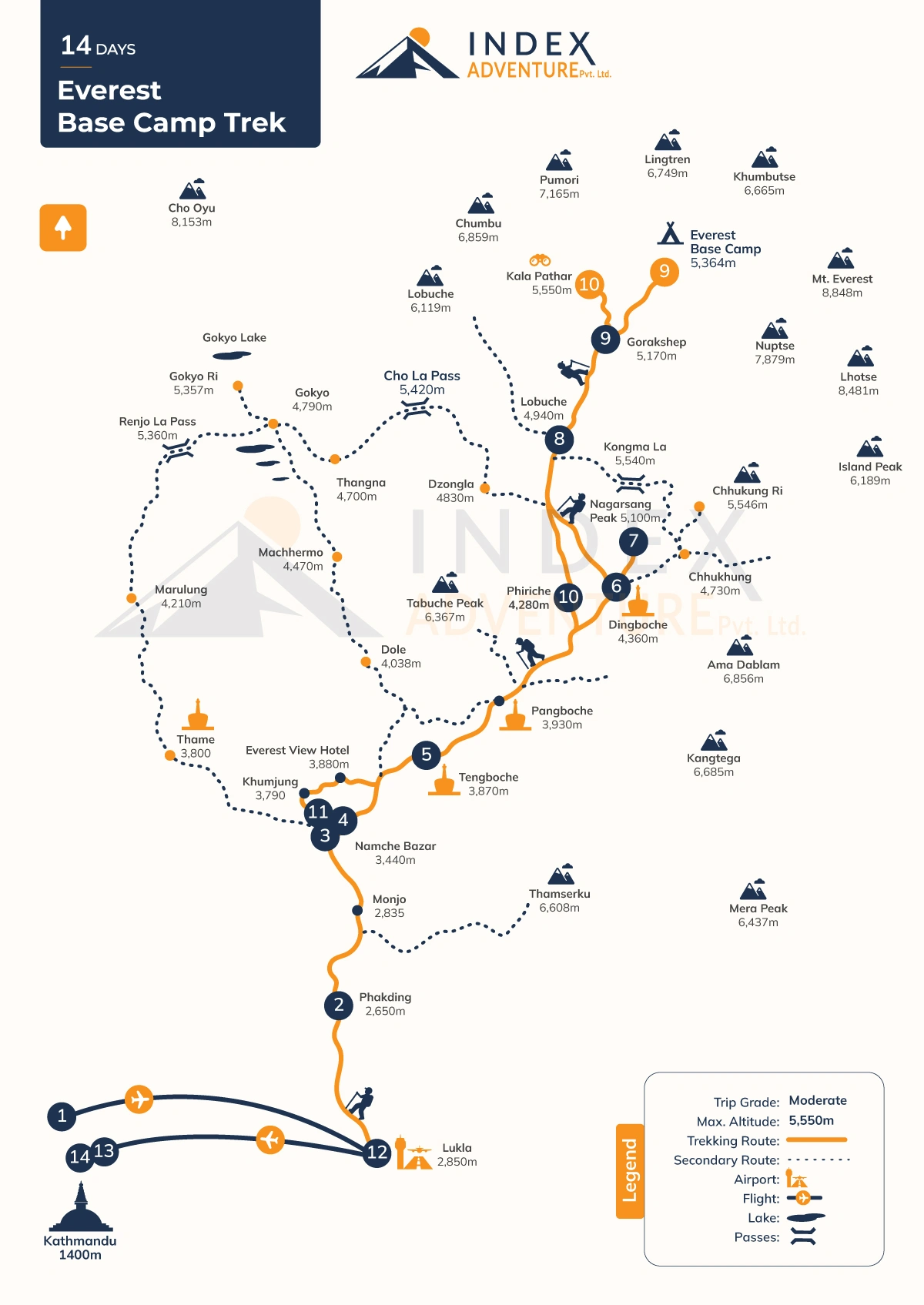
Altitude Chart
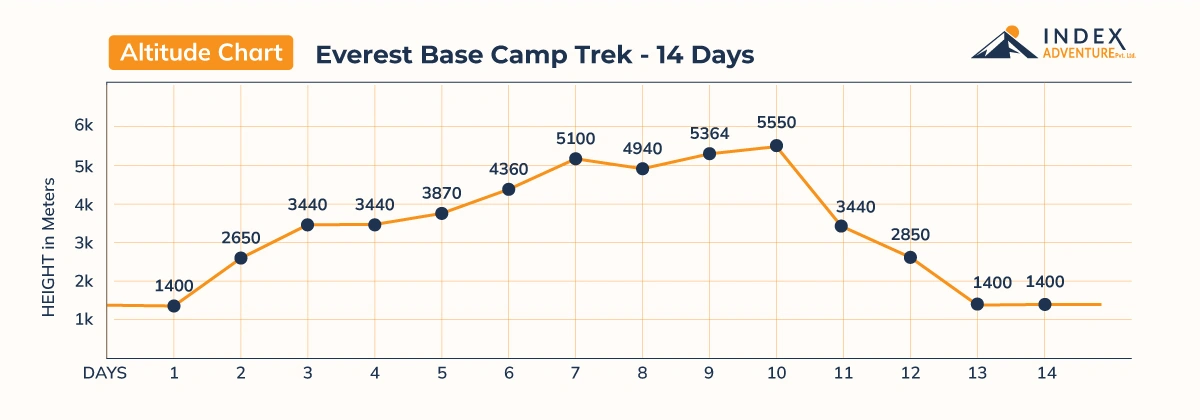
Equipments
Things to Pack for Nepal Trip and Trek
What should be on your packing list for trekking, in case you are going on an adventurous trekking tour to Nepal? Nepal boasts one of the most magnificent scenic views, spectacular mountains, and diverse cultures, making it a dream global trekking destination. Before trekking in Nepal, one needs to be well prepared because of the different terrains, weather conditions, and altitudes. In order to get the best out of your trekking visit, this ultimate packing guide of trekking in Nepal will cover all that is essential: a list of items you could carry with you, clothes, supporting trekking gear, hygiene, documents, etc.
Preparing to go trekking in Nepal can be very overwhelming, but with the right gear and equipment, you should be in a position to withstand anything that the path presents to you. This list is designed for popular treks, including Everest Base Camp, Annapurna Circuit, and Langtang Valley, among others. The list can be adjusted depending on the trek's difficulty and season. This latest and updated travel checklist to pack smart—and trek with confidence.
List of essential packing items
In the trekking, there are thousands of trekkers using costly fashion equipment, and they use outdoor fashion, but we advise you to be ready with hiking equipment that is comfy and sturdy.
- Insulation Layer (Fleece/Down Jacket): Will be needed during cold weather.
- Thermal Base Layers: Help to keep the body warm when it is cold or when it comes to high altitude.Your second actual skin; bring the highest quality (2 sets).
- Fleece Pullover Hoodie: a garment that keeps you warm even when the water condenses on the inside when it is raining. Taking two, both at low-level and at high-level, comes in handy.
- Lightweight Thermal Tops: This is cool when you do not wear a base layer.
- Water, Rain, and Snowproof Outer Shell: recommended to use water, rain, and snowproof (in case of bad weather).
- Hiking Shorts(Optional): They can be good in lower altitudes and on sunny days.
- Hiking T-Shirt (2-3): convenient, breathable, fast-drying tops to wear every day. At a lower altitude.
- Trekking Pants ( 2-3): Loose, comfy pants, flexible, to be comfortable on the trail. Lightweight, quick-drying paints (no jeans, please).
- Down Pants: Bonus heat at night or at a high altitude trek.
- Liner + Insulated Gloves: Cold hands will be kept warm and will be isolated from wind and snow. Should take two light ones and a heavyweight water/windproof. Cold hands will be kept warm and will be isolated from wind and snow.
- Sports Bra for Girls: When you are hiking, a good sports bra should be considered.
- Sportswear Underwear(5-7 pieces): Moisture-wicking to avoid annoyance and irritations. Quick dry.
- Woolen Hat: This will come in handy when it is starting to get cold in the evenings and in the morning hours to keep your head warm.
- Sun hat/ Cap: It protects one against the Sun at high altitude.
- Neck Gaiter/ Buff: Very useful in the sun and dust or cold wind.
Footwear for Hiking in Nepal
- Trekking Socks (3-5 pairs): These socks are meant to lower the possibility of blisters and visible processes that take a short duration to dry.
- Warmer Socks (1-2): Wear during sleep or in an unfavorable climate in cold weather.
- Trekking boots: A pair of sturdy, already used and comfortable, up-to-the-ankle boots made to provide support, traction, and repelling during mountainous and rough trail activities.
- Trail Running Shoes: These are breathable and lightweight and are ideal when on more maintained paths or elevations, where the shoes do not need tough materials.
- Camp Shoes/Sandals: It is convenient, comfortable, and wearing shoes that are worn to house overnight camp or river crossing after a strenuous day of trekking.
- Gaiters (Optional): These cover over the boots so that one is protected against the snow or rain, or on muddy footpaths, dirt will not enter the shoes.
- Crampon-compatible Boots: In case you are planning to trek into high-altitude or glacier-covered parts, then crampons are a must on icy surfaces that cannot be fitted into just any boot.
Gears and Equipment for trekking in Nepal
- Packing a Backpack 30-50L on a personal basis: Its contents include items such as clothes, snacks, and water that may be carried around during the day.
- Duffel Bag 70L: A Larger bag used to carry most of your equipment, which must be waterproof. It should be recommended only when you are going to use Porter.
- Daypack with Rain Cover: A day pack is also essential on your trekking adventure in Nepal, regardless of whether you are carrying a porter or not. Day pack size recommendation is 25-30L with a rain cover, which keeps water and snow out of your pack and contents.
- Sleeping Bag Liner ( -20 °C.): Also, it is highly advisable to bring your own after coming from a sleeping bag, and in case you plan to rent a sleeping bag. Insulates and makes your sleeping bag less in need of washing.
- Trekking Poles: This is optional, though being knowledgeable of their use will help lessen the burden on the knees and enhance steadiness on inclined or uneven ground.
Accessories for trekking in Nepal
- Extra Batteries Headlamp: These can be used on early morning walks, during power failure, or when one arrives late.
- Water Bottles / Hydration Bladder: Makes you hydrated; it is easier to drink on the move as the bladder can be sipped from. Plastic waste can be reduced through the use of a reusable water bottle.
- Water Purification Tablets or Filter: Garfores are the local sources used in providing safe drinking water.
- UV Protection Sunglasses ( UV Protection): Cover the eyes against excessive sun and snow lights.
- SPF 50+ sunscreen/SPF lip balm: Avoids sunburn and dry lips, too.
- Towel (Quick-dry): To wash, or wipe at teasssshouses or streams.
- Toiletries: (Eco-friendly): Toothbrush, toothpaste, a sheet of toilet paper, and biodegradable soap.
- First Aid Kit (Personal): Covers the essentials of bandages, an antiseptic, altitude medication, pain relievers, and any particular medication you might need.
- Snacks ( Energy Bars, Nuts, Chocolates ): Come in handy to provide instant energy when hiking hours are long.
- Notebook and Pen (Optional): To journal or document life.
- Trash Bags: Carry some trash bags to pack and dump your waste, and keep them clean.
- Phone Charger: Have a fully charged cell phone and car charger.
- Power Bank: A power bank means that your gadgets do not run out of power.
- Local SIM Card: Buy a local SIM card (NTC or NCELL) that will enable you to connect well in distant regions.
- Cash (Around 25k to 30k NRS): Keep some cash along with that, which will help you take care of the expenses because on the trek route, ATMs may be few.
- Map and Compass / GPS: Always bring the appropriate geographical tools to prepare yourself.
- Camera and Binoculars: A camera and binoculars can be used to take pictures of the beautiful landscapes and to observe animals.
Documents for Trekking in Nepal
- Passport: Should be valid for more than 6 months, required when making identification, booking of flights, checking in to a hotel, and applying for permits.
- Nepal Visa (Some countries need to obtain this in their homeland): One must have a tourist visa to enter Nepal, and it can be acquired either on arrival at the Tribhuvan International Airport or online.
- Trekking Permits: Get permits of any kind that you will need when taking the particular trekking route.
- Passport-sized Photos (For now, digital and instant photos click options are available): Required by such things as TIMS (not necessary) and park entry; take about 4-6 copies
- Travel Insurance (with emergency evacuation): Highly advised when hiking in high altitude; it is necessary to ensure helicopter rescue, sickness, accidents, and trip cancellation.
- Airline Tickets / Itinerary Copies: On international flights, as well as domestic flights (e.g., to Lukla, Pokhara); handy at the checkpoints, or in planning.
- Permit Payment Proof: You can be asked to show a receipt or a copy that you have paid your permits in the trails or at the entrance to the park.
- Address to use in cases of emergency: Ought to be handy or given to your trekking agency or guide.
Trekking Equipment Provided by Index Adventure
- Quality Sleeping Bags (-15 degrees Celsius rated): For warmth and comfort during the trek, especially at higher altitudes.
- Premium Down Jackets (-15 degrees Celsius rated): Provide essential insulation against the cold.
- First-Aid Kit: A comprehensive kit with necessary medications, an oximeter, and supplies for minor injuries and illnesses.
- Crampons: For traversing icy and snowy paths.
- Water Purification Tablets: To ensure safe drinking water.
FAQs for Everest Base Camp Trek - 14 Days
Yes, since it is a trek, there is a hot shower along the way. Within our package, there will be a hot shower on a complimentary basis at three locations i.e., Lukla, Phakding, and Namche. At other locations, it will be priced approximately NPR 300-500 per hot shower, depending on location.
Credit/debit cards are useful only in a few areas, such as Namche Bazaar, but not beyond that. Please note, it is easier if transactions are made using cash, but be warned, they will not take foreign currency; only local currencies are accepted.
Our trek packages include three meals a day (breakfast, lunch, and dinner), so we do not spend much on food. But you will have to consider around NPR 2500-3000 per day on water, snacks, and extras.
Tap water may appear not to be fully safe to drink, and we should preferably not drink it without purifying it using the tablets. There is also the option to purchase bottled or boiled water at teahouses at prices of NPR 200-700 per liter. Our package does not include drinking water.
Also, in case you carry any kind of dietary restrictions, there is no issue at all on the Everest Base Camp Trek; vegetarian, vegan, and gluten free meals on the menu. In case you have special dietary needs, you should tell your guide in advance, and he can in turn advise the cook of the teahouse who will prepare your meals to your pleasure.
All types of food can be found on the trail, from local Nepalese and Sherpa cuisine to international cuisine. There are even freshly baked cakes, muffins and other baked snacks.
You are also able to buy an Air Link Card and Everest Link (not in use for now), which is rather popular in the Everest region as it offers a fast and stable connection to the internet.
There are different means of accessing the internet. In case you have bought a SIM card, you may use data to go online. Nonetheless, the connection between the network and communicating or accessing the internet will not always be excellent. The connection can become weak as you go up in altitude. The teahouse may be able to provide Wi-Fi service, but charges will most likely be incurred.
Most often, prior to departure, our guides always remind trekkers to visit the toilet to prevent the urge to do so on the trail. Besides, you will find a few houses along the path, which will allow you to use their washrooms. However, in case of an emergency and lacking houses around the place then you will be forced to do it in the wild!
On the Everest trail, there are western flushing-style toilets, plus squat-down toilets. Nonetheless, in winter, as you ascend the trail, we recommend you use the squat-down toilets in place of the sit-down toilets. This is due to the fact that high up it becomes colder and water freezes, hence it becomes hard to flush the toilet. That is why we recommend that you make sure the water is actually functioning optimally before using the toilets.
The Everest Base Camp (EBC) trek is approximately 130 kilometers (80 miles) round trip, covering the journey from Lukla (the gateway airport) to EBC and back. The actual distance walked each day varies, averaging 10-15 kilometers (6-9 miles) depending on the itinerary and acclimatization days.
In the course of the trek, you will stay in the teahouses/guesthouses. The rooms at teahouses are tidy and clean, having twin beds available to accommodate two trekkers; the beds are placed on a mattress, a bed sheet, a pillow, and a blanket. There are three stops where there are their own bathrooms, namely, Lukla, Phakding and Namche.
In order to make an Everest Base Camp Trek, you should have a valid passport, a tourist Visa, two passport-size photographs for obtaining the trekking permits and travel insurance, which is very essential.
At the airport, we will have one of our representatives who will welcome you. He will have in his possession the Index Adventure name plate on which your name goes. He will drive you to your hotel and assist you to do checks. In addition, our airport representative will visit you at your hotel about three hours prior to the time you are supposed to leave. He will take you to the airport for your flight back home
It is possible to obtain a Visa on Arrival at the airport upon entering Nepal by plane. It is fast and quick, and queues could be present during high season. Alternatively, you can acquire a visa at the Nepal embassy in your homeland, though remember you have a six-month window ahead to travel after it is issued to you.
The citizens of some countries might also require a consulate Visa. In case you are entering via India or Tibet, then you are also able to obtain your visa at the port of entry.
If you are an ideal traveler who is physically fit, likes hiking in beautiful natural scenery, and is not scared of the trekking experience in high altitude, the Everest Base Camp Trek is just your thing. It is perfect when you want a challenging combination of physical activity, breathtaking scenery, and an informative cultural exploration, as well as taking care of you as you safely trek through the Himalayas.
The most recommended time of the year to make the Everest Base Camp Trek is during the spring, which is between March and May. The trek can be done all year round, come to think of it, but the Nepal mountains are said to have changing weather.
September to November (Autumn) is also a good time to come, especially if you cannot come in the spring. You will find wildlife, flowers that blossom, and blue skies. Whatever time of the year you wish to trek, it is going to be an experience to remember.
One does not need hiking experience on the trip. The ability to walk and traverse moderately steep hills should be possible to enable you to follow the guides. The Index Adventure will monitor you, and you all go at a plodding pace together along the trail.
Worried about whether you are fit enough to keep pace on the EBC hike in Nepal, it is advisable to engage in different cardiovascular exercises, such as walking, jogging, and swimming, to be steady on the trek. It will not be news to most people that the air at higher altitudes is thin, and one might have a hard time catching their breath unless they are prepared to face the altitude.
Getting lots of rest, hydration, and being in good physical shape before heading out on the hikes can also go a long way. The quicker you adapt to the environment, the quicker you will adjust accordingly. The primary objective is to maintain your body power throughout extended sessions to maintain a consistent speed.
